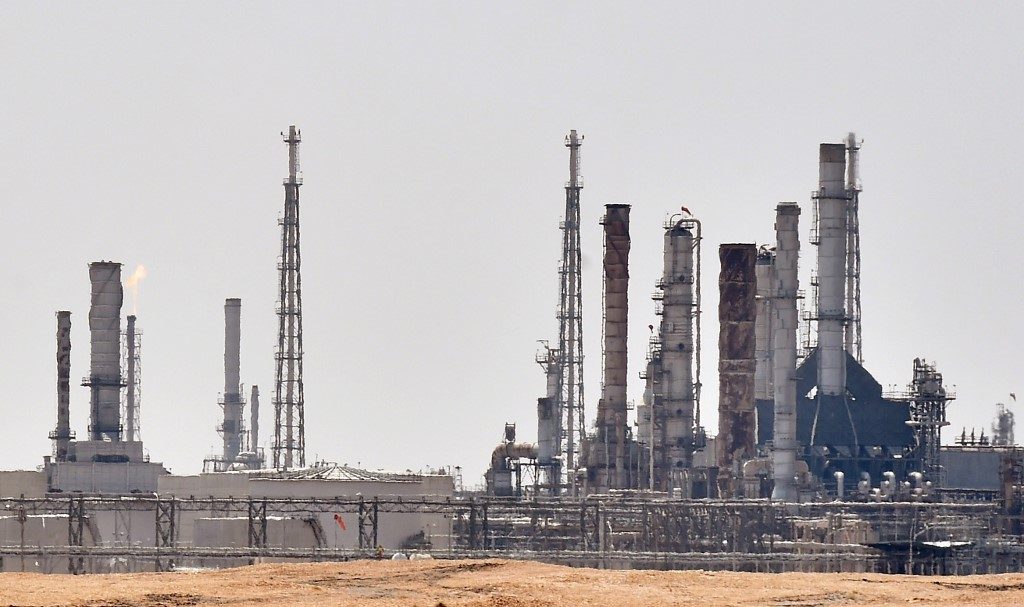SUMMARY
This is AI generated summarization, which may have errors. For context, always refer to the full article.

DUBAI, United Arab Emirates – From its beginnings in 1938 when it first struck oil with the aptly named “Prosperity Well,” Saudi Arabia’s national energy giant Aramco has delivered unimaginable riches to the desert kingdom.
It has since grown into the world’s largest and most profitable energy concern, generating 10% of global crude supplies and trillions of dollars in income.
However, it has been hit in recent months by a string of serious attacks on its oil facilities, the latest on Saturday halting the flow of 5.7 million barrels of oil per day, over half of its output, using drone strikes.
The strikes threaten to undermine plans for Aramco to make its stock market debut, in a listing that could generate $100 billion based on a $2 trillion valuation of the company. (READ: Saudi Arabia battles market jitters after oil plant attacks)
Aramco has its origins in a 1933 concession agreement signed by the Saudi government with the Standard Oil Company of California. Drilling began in 1935 and the first oil began flowing three years later.
It gained its current name from the subsidiary created to manage the agreement that was called the Arabia American Oil Company in the late 1940s.
In 1949, oil production hit a milestone 500,000 barrels per day and the following year Aramco built the 1,212-kilometre (753-mile) Trans-Arabian Pipeline to export Saudi oil to Europe across the Mediterranean Sea.
Production rose rapidly after the discovery of large offshore and onshore oilfields including Ghawar, the world’s largest with some 60 billion barrels of oil, and Safaniya, the biggest offshore oilfield with 35 billion barrels.
In 1973, with prices spiking at the peak of the Arab oil embargo – imposed against the US over its policy on Israel – the Saudi government acquired 25% of Aramco to increase its share to 60% and become a majority stakeholder.
Seven years later, it was nationalised, and in 1988 it became the Saudi Arabian Oil Company, or Saudi Aramco.
From the 1990s, Aramco invested hundreds of billions of dollars in massive expansion projects, raising its oil output capacity to over 12 million bpd, besides making bold international acquisitions and joint ventures.
Currently, Aramco has some 260 billion barrels in proven oil reserves, the second largest in the world after Venezuela, in addition to 300 trillion cubic feet of gas.
Based in Dhahran in the country’s east, the firm has key oil operations in the United States, China, India, South Korea and several European and Asian nations.
Aramco has also built a network of domestic pipelines and refineries inside and outside the kingdom and expanded its presence in the petrochemicals industry.
In April, it opened its account books for the first time, announcing it posted $111.1 billion in net profit in 2018, up 46% on the previous year, and generating $356 billion in revenues.
The opening of its secretive accounts was designed to increase transparency ahead of the IPO which is the cornerstone of de facto leader Crown Prince Mohammed bin Salman’s “Vision 2030” reform plans for the country.
However, the listing has been repeatedly delayed, with analysts citing low oil prices as well as squeamishness over disclosing facts and figures about the firm which have traditionally been viewed as state secrets. – Rappler.com
Add a comment
How does this make you feel?
There are no comments yet. Add your comment to start the conversation.